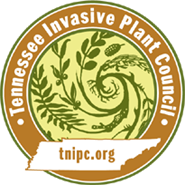Rubus phoenicolasius Maxim.
Wine Raspberry, Wineberry| Threat Level | Category |
|---|---|
| Established | Shrub |
|
Similar Species May be confused with the following native and/or non-native species. Landscape Alternatives lists native horticultural substitutes |
Rubus spp. |
|---|

Description
Height
Wineberry stems can grow to 9 feet (2.75 m) in length.Stem
The mature plant has long stems (canes) that are upright and arching and covered with distinctive glandular red hairs and small spines. The hairs give the canes a reddish color when seen from a distance.Leaves
Leaves consist of three heart-shaped, serrated leaflets with purplish veins. Leaf undersides are silvery-white and downy.Flowers
Small, greenish blossoms with five petals and reddish hairs flower in spring.Fruit
Edible raspberry-like fruit is bright red ripening in June and July.Images
Photo: Leslie J. Mehrhoff, University of Connecticut, Bugwood.orgMore images of Rubus phoenicolasius
Life History
Wineberry, also called Wine Raspberry, is a multi-stemmed, spiny, small shrub that can grow to 9 ft. (2.75 m) and is a member of the Rosaceae (Rose) family. It spreads through seed dispersal via birds and mammals as well as vegetative spread when long canes take root where they touch the ground. Though useful to berry culture, Wineberry is an aggressive plant forming large, dense thickets and is a threat to native plants in a variety of habitats. Wineberry is sometimes confused with the common blackberry and raspberry of the same family.Habitat
Like other members of Rubus, wineberry prefers moist conditions and adequate sunlight. Many species of birds and mammals use the brambles for nesting and shelter.Origin and Distribution
Wine raspberry is native to eastern Asia and was first introduced into the United States in 1890 as breeding stock for new raspberry cultivars. Other States Where Invasive: AR, CT, DC, DE, GA, IL, IN, KY, MA, MD, MI, NC, NJ, NY, OH, PA, RI, SC, TN, VA, VT, WVFederal or State Listed as Noxious Weed, Prohibited, Invasive, or Banned: CT, MA
Sources
Assorted authors. State noxious weed lists for 46 states. State agriculture or natural resource departments.Haragan, P.D. 1991. Weeds of Kentucky and adjacent states: a field guide. The University Press of Kentucky. Lexington, Kentucky.
Southeast Exotic Pest Plant Council. 1996. Invasive exotic pest plants in Tennessee (October 1999). Research Committee of the Tennessee Exotic Pest Plant Council.
